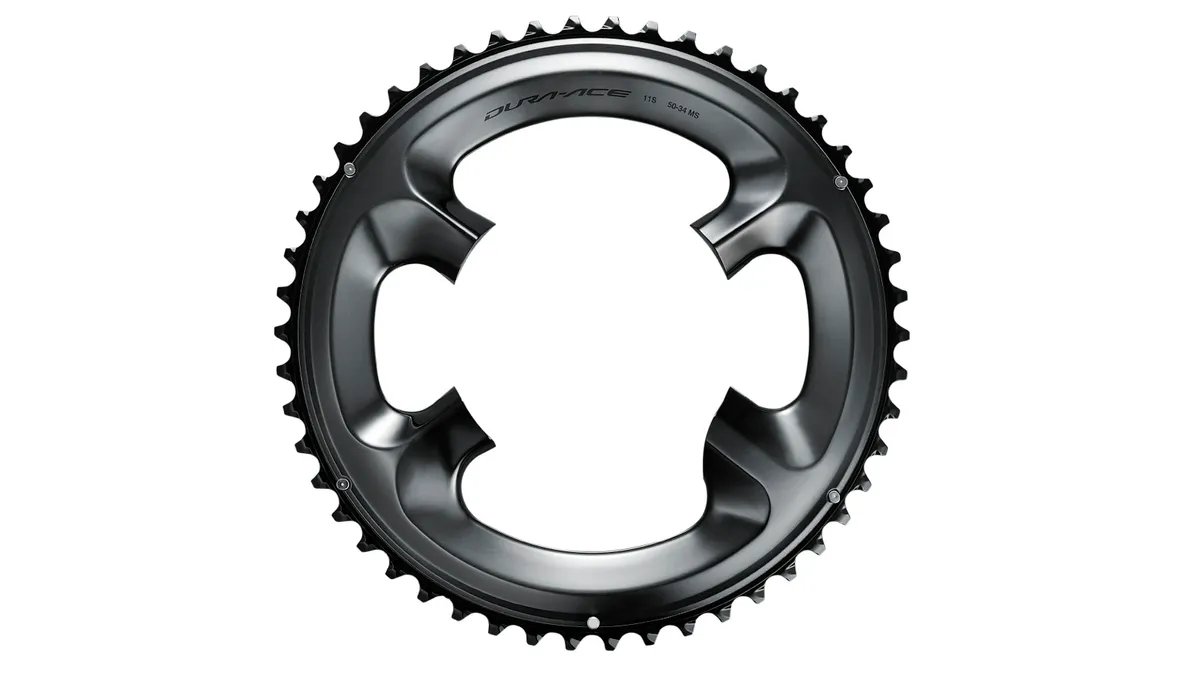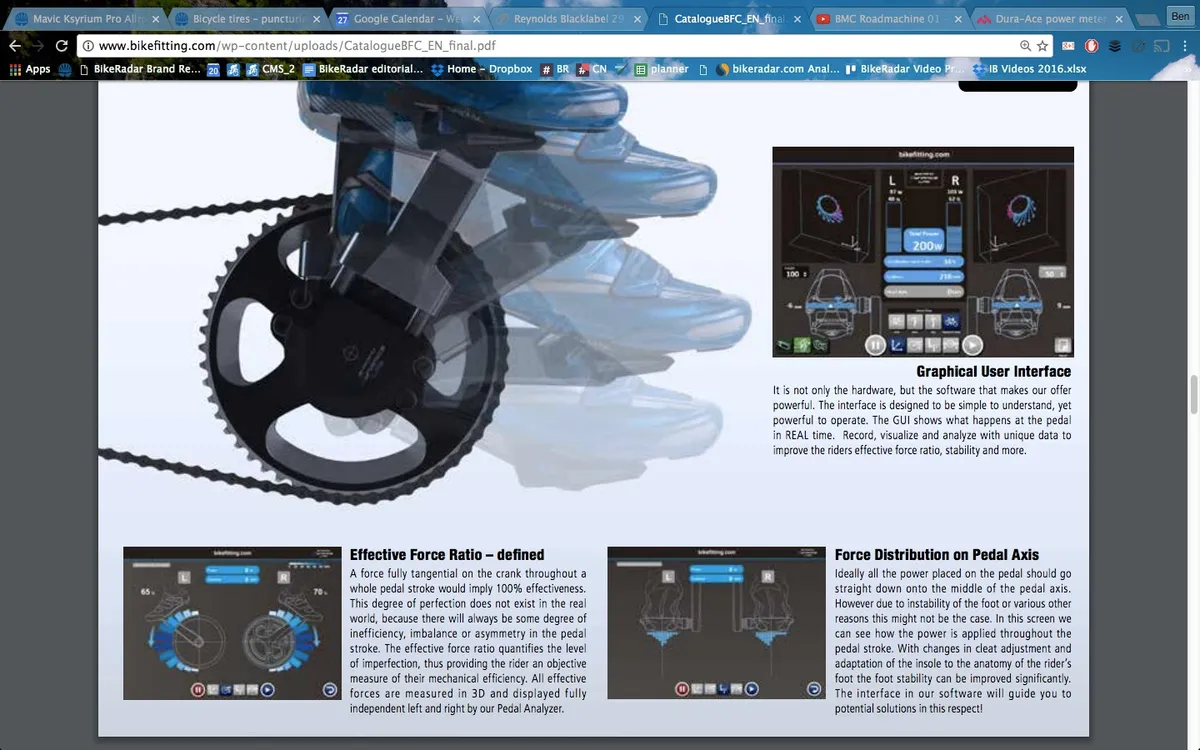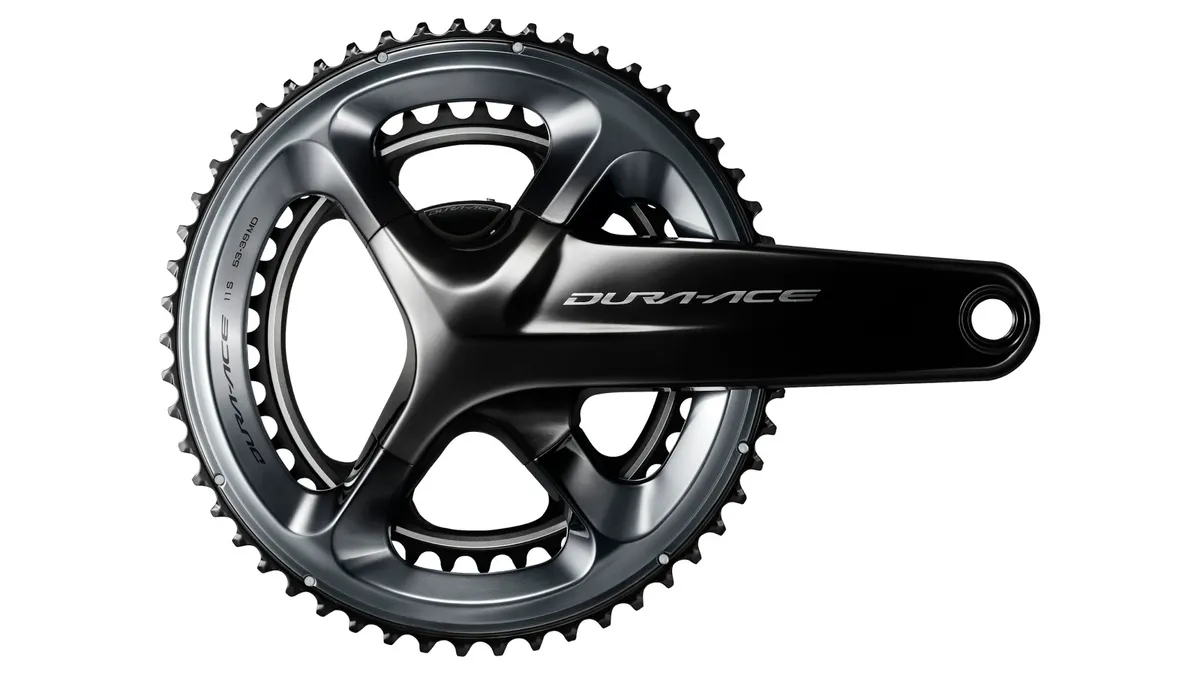This winter, Shimano is finally entering the power meter market with a Dura-Ace crankset, the $1,550 / £1,499 / AU$1,999 R9100-P. The dual-sided power meter will be available November 1 as complete crankset and will also be sold as just the two arms without chainrings.
While a few companies currently sell power meters based on Shimano cranksets — Stages created the left-arm category it now shares with Pioneer and 4iiii, plus brands like SRM and power2max have Shimano-compatible spiders — the Dura-Ace R9100-P is the first power meter from the Japanese component giant.
Shimano road product manager Dave Lawrence said Shimano decided to enter the power meter market largely based on feedback from pro teams.
"Teams wanted overall a very accurate, very consistent, very durable system," Lawrence said. "We felt that since we are manufacturing the crankset, we could do that. We could install strain gauges at the time of production. We could bring all three of those pieces together. They felt like they weren’t necessarily getting that from their current options. They also wanted to be able to switch out chainrings very easily. And they also wanted left and right."
Shimano claims the power meter is completely waterproof, and offers +/- 2% accuracy, which is fairly standard for the category

R9100-P features: Bluetooth, dual-sided, rechargeable and waterproof
In addition to aesthetic and purchasing integration with Shimano Dura-Ace groups, the R9100-P also brings a few new things to the category.
There is distinct left/right measurement with strain gauges on both sides, but unlike other true dual-side meters, Shimano only has a single battery as the two sides are connected with a wire. (Some meters, like Quarq, offer left/right data without distinct left/right measurement, instead using a formula based on where power is applied in the pedal stroke. Other meters with true dual-side measurement have two batteries.) There is also only a single point of data transmission, instead of one from each crank.
The enclosed battery is charged with a magnetic adaptor, which avoids exposing the battery to the elements. A charge of the Sony lithium-ion battery last for 300 hours of ride time, Shimano claims.
For gearing, the R9100-P will come in the three standard configurations, 53/39, 52/36 and 50/34
Shimano claims the power meter is completely waterproof, and offers +/- 2% accuracy, which is fairly standard for the category.
The power meter adds 70g to the crankset weight. For a 170mm crankset with 53/39 rings, the R9100-P weighs a claimed 691g.
For data transmission, the R9100-P works on the standard ANT+, but it also has Bluetooth, which offers the ability for easy firmware updates from smartphones.
Bikefitting's younger, outdoor-going sibling

A few years ago, Shimano purchased Bikefitting.com, which incorporates dynamic pedaling analysis, among other things. Bikefitting’s 3D Pedaling Analyzer measures the direction of force applied every 7 degrees, which is similar to how Pioneer's system works, and uses a metric Bikefitting calls "effective force ratio."
Lawrence said Shimano took some lessons from the Bikefitting system, which is more sophisticated in its measurement because weight isn't a concern for the indoor tool.
For instance, Bikefitting's tools can measure and display how and where power is applied in 3D through the pedaling cycle. The Shimano R9100-P power meter only measures power in left and right wattage. It can relay metrics like efficiency and smoothness, but it doesn't show where power is applied in the way that Garmin Vector or Pioneer power meters and their respective head units do.
As for the specific differences in power measurement, Lawrence declined to specify the inner workings of the new meter.
"We don't say. We have a proprietary system," Lawrence said. "We have Shimano-developed strain gauges."
As to the number and configuration of said gauges, Lawrence said he could not comment.
For gearing, the R9100-P will come in the three standard configurations, 53/39, 52/36 and 50/34. As with the previous generation, 9100 cranks will work on their own OCD standard, so you can mix and match rings without worry of 130 or 110 concerns like you do for other brands’ standard and compact cranks. However, the 9100 rings are not compatible with 9000 rings.
The R9100-P will be sold just as the cranks without chainrings for $1,350. UK pricing was not immediately available for this option.
Shimano claims that changing chainrings will not affect the power meter’s calibration. Lawrence said that Shimano will announce its calibration process in the coming weeks. The process will involve shipping the crankset to Shimano's headquarters.
The zero-offset function can be done in three ways: hold a button down on the power meter, use Shimano's E-Tube app or use a computer like a Garmin Edge. The Shimano meter has built-in temperature compensation, but Shimano recommends doing a zero offset before each ride.
BikeRadar just received a test sample of the Dura-Ace R9100-P, and we will post a first ride review later this week.

p.p1 {margin: 0.0px 0.0px 0.0px 0.0px; font: 14.0px Helvetica}
